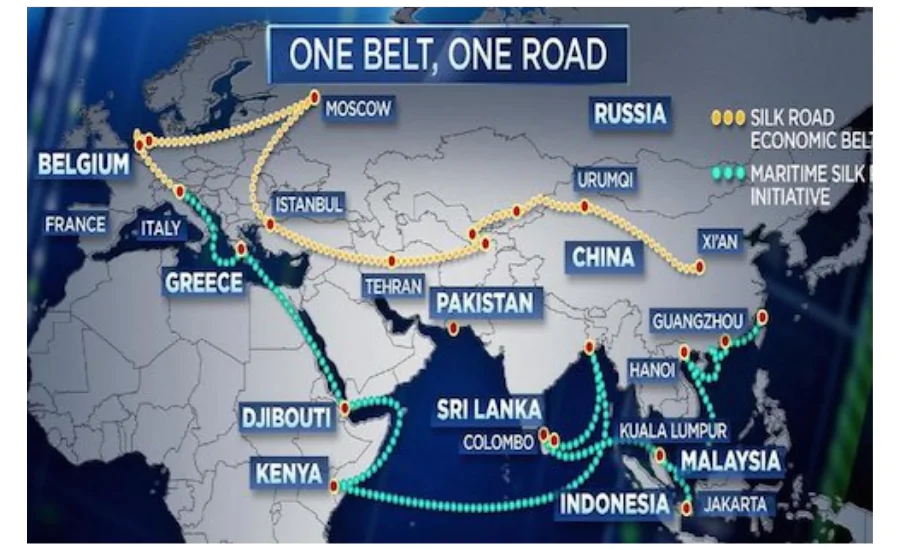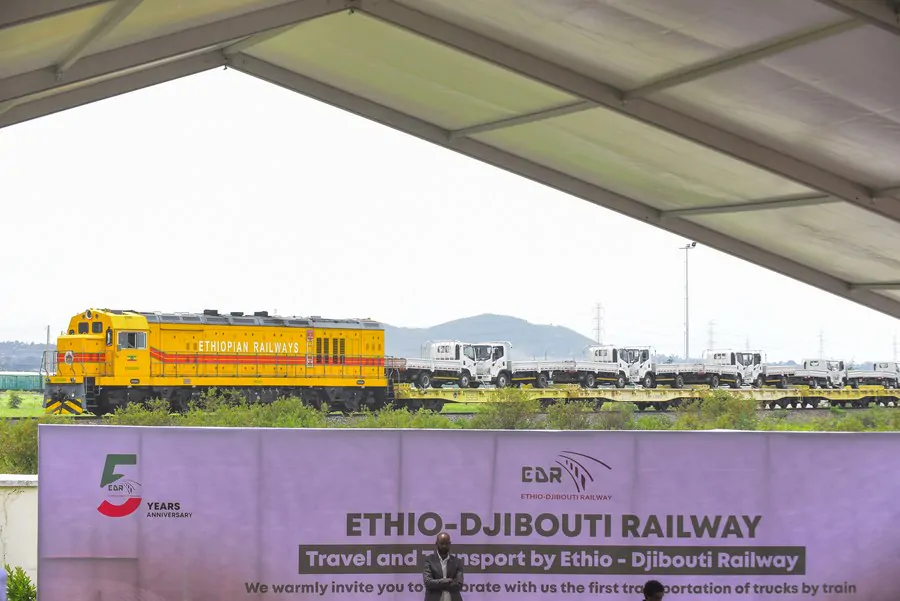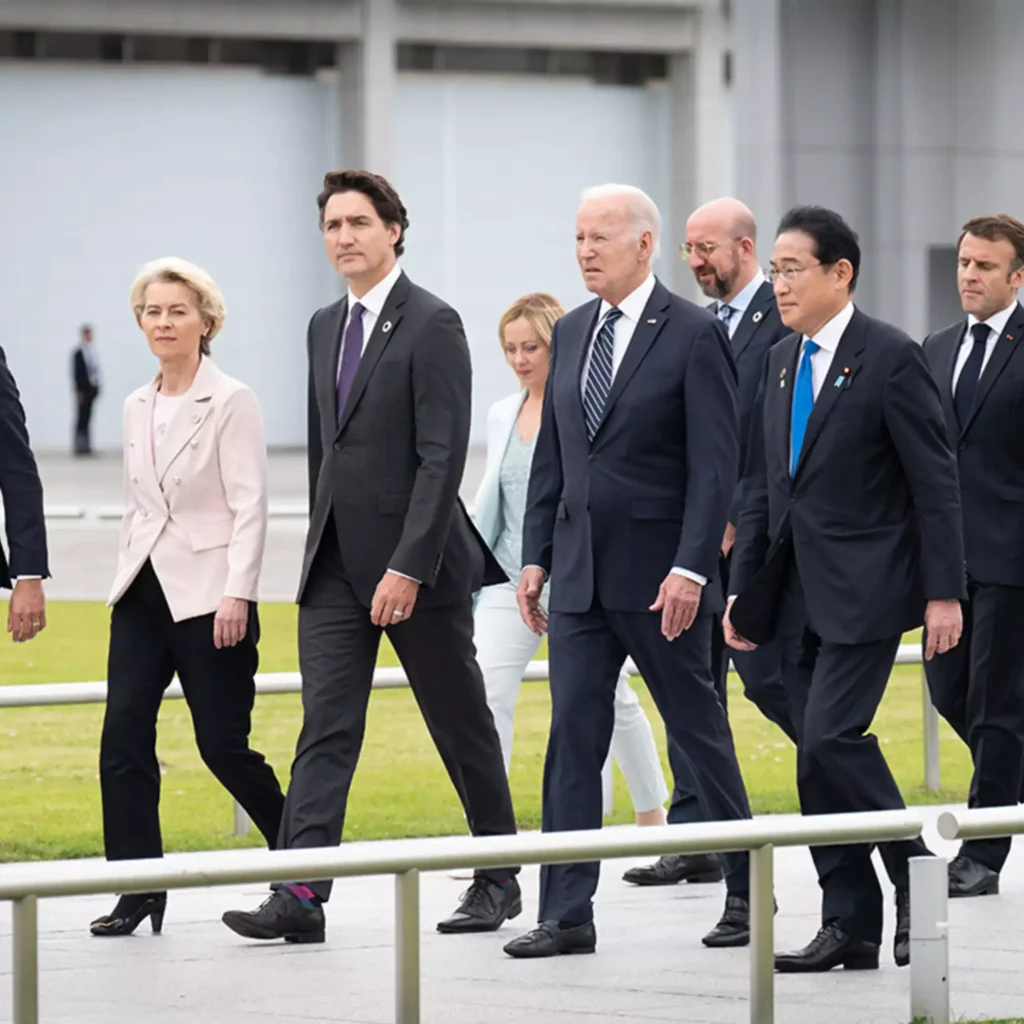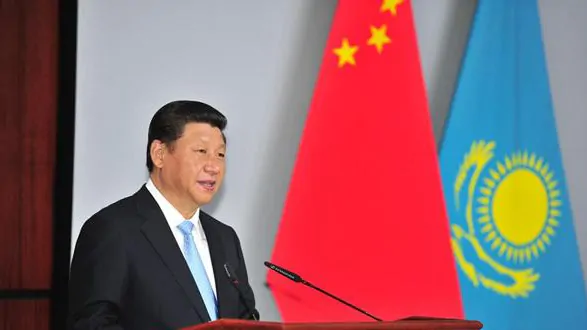It all started when one man in 2013 came up with an idea to revive the old Silk Road. And that man was none other than China’s President Xi Jinping. In October of 2013, Xi gave a speech in Kazakhstan where he first floated the idea of the Belt and Road Initiative (BRI).
Table of Contents
- Setting the Stage for Belt And Road Initiative
- CHINA’S GROWING INFLUENCE:
- THE RISE OF BRI:
- THE DECLINE OF BRI:
- GROWING COMPETITION FROM WEST:
Setting the Stage for Belt And Road Initiative
An ambitious plan that involves more than 150 countries which translates to 40% of the Global GDP [source: World Bank], 65% of the world’s population [source: United Nations] and 75% of the known energy reserves [source: BP Statistical Review].
A Plan that covers more than 8000 kms of land and sea and requires 4 Trillion Dollars of Capital to build more than 2,600 projects such as coal & hydropower plants, wind farms, highways, power stations, power grids and so on.
BRI is estimated to be completed in 2049.
Why 2049 You may ask?
Because it marks the 100th anniversary of founding of the People’s Republic Of China.
But 10 years in, things, are not looking so bright.
- There have been major construction flaws in major infrastructure projects,
- Countries like Malaysia, Kazakhstan and Bolivia have cancelled many BRI Projects over concerns of corruption
- and debt level of many countries receiving Chinese loans have sparked concerns about BRI’s Financial Sustainability.
And to top it all, Italy, the only major western power to join Belt and Road, announced on December of 2023 that it is leaving the initative.
So How did it all, go so Wrong?
CHINA’S GROWING INFLUENCE:
China experienced a rapid economic rise since 1978, when the country began to reform and open up its economy. It’s real GDP grew at a staggering rate of 10% and then came the Global Financial Crises of 2008.
And China’s govt. was worried, so it started pumping a lot of money into the Chinese economy.
Which resulted in a massive domestic infrastructure construction and huge domestic investment in heavy industries
And as a result in 2011, the economy was already overheating with a lot of excess capacity.
And in order to prevent a collapse the Chinese Govt. asked its companies and Exporters to go out and seek more lucrative returns in the international market and also injected more capital into China’s Policy Banks and Financial Institutions which enabled them to provide financial support the these Chinese Companies in order to win these overseas contracts.
And as a result in 2013, the Chinese govt. launched the Belt And Road Initiative.
The objective of BRI was Clear, China wanted Global Domination.
China wanted to expand its economic and political influence and also create right conditions for its companies to go Global.
And in words of Beijing it wanted “Globalization With Chinese Characteristics”.
And it was already showing up:
- In 2010, China Became the World’s Second largest Economy
- In 2011, it became the world’s largest manufacturer
- And right now is the largest economy in terms of Purchasing Power Parity.
PPP is the exchange rate at which the currency of one nation must be converted into the currency of another so that the same products and services can be purchased in each country.
For example, if a liter of Coca-Cola costs 2.3 euros in France and 2.00$ in the United States, then the PPP for Coca-Cola between France and the USA is 2.3/2.00, or 1.15.
THE RISE OF BRI:
So, What exactly was the plan under the Belt and Road Initiative?
Belt refers to the land routes whereas the road refers to a maritime network i.e. shipping lanes running from China to Europe and the Middle East through the Indian Ocean and the South China Sea.
Belt is made up of 6 corridors:

- From Jilin to St. Petersburg in Russia
- From Shandong to Denmark
- From Kazakhstan to Turkey
- From Hainan to Malaysia
- From Guangdong to Bangladesh
- From Xinjiang to Pakistan
This corridor is also known by the name of China Pakistan Economic Corridor.
This is where the economic belt meets the maritime road and it is a win-win deal for both China and Pakistan.
As for China, This corridor means a strategic outlet to the Arabian sea, A new alternative route for Oil and gas through west Asia and for Pakistan it means a lot of money.
As of June 2023, China had signed more than 200 BRI cooperation agreements with over 150 countries and 30-plus international organizations.
They launched multiple projects, a highway in Pakistan, a new seaport in Sri Lanka, forest city in Malaysia, a hydropower plant in Uganda, a motorway in Serbia and these are just a few of the examples.
As we speak, roads, railway lines, shipping routes, ports, industrial parks, oil refineries and power plants are being built in at-least 72 countries.
The world bank reckons that China’s BRI project could lift more than 7 million people out of extreme poverty and could boost global trade by 6.2%.
For example in Djibouti, its BRI project includes a major port, a new railway line to the Ethiopian Capital and a gas pipeline.
China’s put up about $14 Billion Dollars in investments and loans for Djibouti between 2012 and 2020.
But where is all this money coming From?
Over the last 10 years, the BRI as it is generally called, has seen Chinese financial institutions lending in excess of $1 Trillion to finance infrastructure projects all over the developing world.
THE DECLINE OF BRI:
But What Went Wrong with BRI?
China’s moto with the Belt and Road was, “Build and they will come” as it did domestically but the catch here was to only give orders to Chinese companies who will build much of the infrastructure, financed by Chinese Policy banks and financial institutions.
Now the problem here is that China has given loans to countries which just cannot repay, where the Government is unsustainable, has weak democracy, or the security situation is precarious.
Most of these projects are running into trouble, because of financial irregularities, corruption, scams and terror attacks.
In Bangladesh the Padma rail link project is facing a funding crunch, in Nigeria there is turmoil over the prospect of losing sovereignty, lawmakers are demanding a probe into Beijing’s lending practices, in Afghanistan the national debt is mounting and it has said no to any further Chinese loans.
According to a Centre for Global Devlopment Report, 23 BRI member nations are at risk of significant debt distress and out of that 8 countries are at heavy risk and they can end up owing half of their foreign debt to China.
Remember Djibouti? Its facing what the world Bank calls “Debt Distress” Its debt to china amounts to 70% of its GDP.
And Look at Sri Lanka, Former President Mahindra Rajapaksha, borrowed billions to develop a massive new port.

When Sri Lanka struggled to pay back the money, it ended up with a new deal that gave China control of the Port for 99 years that led to acquisitions that the loans compromised Sri Lanka’s Sovereignty.
The Gwadar Port in Pakistan has been leased to China for 40 years, the Obock military base in Djibouti has been leased for 10 years, Tajikistan had to cede more than 1000 square km of land for a petty loan, Laos had to let go of its entire national electric grid to a Chinese Company, the Melaka Gateway in Malaysia now is in Chinese control for 99 years.
It’s this kind of thing that led to some people calling the belt and road initiative a debt trap for vulnerable countries.
Then we have Europe, countries like Romania, Lithuania, Slovenia and the Czech Republic either want to terminate BRI or have started blocking Chinese investments, these countries are still technically part of the BRI but most of them are wary.
And Italy and Philippines have announced they are straight away leaving the Belt and Road.
According to another report 586 chinese banks and financing firms have been classified as highly risky, that’s more than 13% of the China’s banking sector.
And now China is learning its lesson, as its international lending post-2020 hit its lowest level in almost two decades.
GROWING COMPETITION FROM WEST:
In June of 2021, Western Powers led by the United States announced in the G7 Summit that they set out their own plan to compete with China’s BRI, Called B3W i.e. Build Back Better World.
Under which they will collectively provide 100’s of billion’s of dollars to low and middle income countries with emphasis on Climate Change, Health Security, Digital Technology and Gender Equity.

But the plan was thin on details, until 2022, when the G7 nations again met and renamed the plan to PGII which translates to Partnership For Global Infrastructure And Investment, under which they will provide 600 Billion Dollars over the next 5 years to invest in global infrastructure projects.
And the Breakdown will be as follows:
· US will contribute 200 Billion Dollars
· Germany, France & Italy will contribute 300 Billion Dollars
· And UK, Canada & Japan will contribute 100 Billion Dollars
But will $600 Billion Dollars be enough to match the scale and size of China, who has spent more than a Trillion dollars in the past decade alone and has a plan to spend 3 Trillion Dollars more.
This only time will tell.
But one thing is for sure, growing competition between The West and China will give more choice, opportunity and Crucially more money to the developing countries that desperately need it.
Also Read: How Chaebols Dominate South Korea’s Economy? (Samsung, Hyundai, LG)
